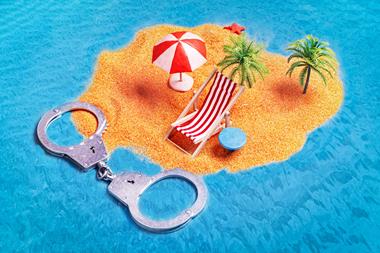Imagine a five-star hotel with rooms that can't be bought, a silver-service restaurant that never opens to the public, a state-of-the-art building that is heated by the earth's core, a heritage building with window frames painted in pure gold, rooms decorated with one-off designer furniture.
Even more difficult, imagine an international company, renowned for its financial expertise, that sinks millions into a venture it knows will never make a profit.
Yet Swiss Re did exactly that when it created Rüschlikon, its centre for global learning, on the outskirts of Zurich.
Cynics will say that no company with the money nous of the giant reinsurer will do anything for nothing. But there is no doubting the conviction of Walter Anderau, a Swiss Re executive board member and head of communications and human resources, when he talks about the altruistic aims behind Rüschlikon.
Rüschlikon is Anderau's baby, and he and Rüschlikon boss Fritz Gutbrodt are passionate about the building's future as an international centre for thinking, learning and meeting for both Swiss Re staff and outsiders.
“Our ambition should be to help shape the future and help people take risks,” Anderau says. “Risk for a lot of people has a negative connotation but, to me, no risk is no fun.
“This will be our single most important contribution to society, to change the perception of Swiss Re from a grey mouse to people who are fun because they know how to take risks.”
This includes the risk of putting serious money into bricks and mortar, when the rest of the world is getting excited about virtual existence. “I don't care what others say,” Anderau says. “I have to do what our company needs, what our clients and other stakeholders need.”
Worth taking a risk
His gamble appears to be paying off. The centre was opened amid three days of celebration in November last year, followed immediately by a full conference on Digital Worlds. Since then, Rüschlikon has hosted a seminar for Swiss Re chief executives, a three-day conference called Managing the Global Ageing Transition, an annual meeting of Dutch insurance risk managers, a creativity and innovation think-tank for Swiss Re staff of all levels, and a challenge programme for Swiss Re senior managers. The rest of 2001 is heavily booked, with 87% occupancy for the conference facilities and 70% occupancy for the centre's 53 hotel rooms. Swiss Re prefers not to pre-book the centre entirely, leaving room for spontaneous events.
Anderau says there are three goals that can be achieved with Rüschlikon. “The first is to invite a lot of excellent people from all over the globe to get input and set benchmarks against great minds,”he says.
“The second is that it's a little bit apart from the head office so people are able to think a little bit in a crazy way. Then, when it's been settled, it can become part of the head office ethos. It's a contact between our clients and our experts, the perfect meeting tool.”
Anderau is adamant that Rüschlikon's success in achieving these goals will not be measured in financial terms. “The profit does not lie in the occupancy rate of the rooms, but in the knowledge it produces,” he says. “We're thinking of return of investment in the soft factors, the spirit that the company spreads, that shows we keep people up-to-date, keep them employable, so they don't join Swiss Re and think that this is it for the rest of their lives. We want to have regular conferences on top topics, such as global ageing, with people from universities and politics.”
It seems possible that, in Rüschlikon, Swiss Re has created a building that can match Anderau's expectations. The centre is built on the side of a mountain that used to be the private estate of a wealthy industrialist family called the Bodmers. It later became a Baptist seminary before being sold to Swiss Re. The original Bodmer house, protected under Swiss heritage law, has been restored to form a conference room, three meeting rooms, a club room worthy of an English gentleman's club, three office suites and an 80-seat restaurant and bar. The villa's window frames are painted with real gold, its floors all Portuguese slate and parquetry.
The main building is made up of cavernous rooms in deep ochre, sand and earth tones, with huge panes of glass and metal and a still, cloistered feeling. It is heated and cooled thermally and has high-tech net ceilings to improve acoustics and ventilation.
The hotel rooms are decorated by top Swiss designers and are complemented by a spa, sauna and steam room that are made to look like a rock grotto, and a modern gym.
A room for every occasion
It also has seminar rooms, offices, a cafeteria, a library and room for banquets, concerts and cocktail parties, plus a giant auditorium. The grounds feature sculptures by well-known artists and the entire building is designed to blend into the mountain, so it looks unimposing when you enter its poplar and fir-lined drive, but has an amazing view of a lake and snow-covered mountains. Concrete is set with green glass so it glows in the sunlight, and features of the old estate, such as ornate cornices, are cleverly mixed with ultra-modern fittings.
However, for Anderau, the spectacular surroundings are second to the feeling the building must elicit. “There was a big need for the company to create a focal point – that is what Swiss Re's all about,” he says. “It's key that people feel a sense of home in a company.”
Hosted by comedian and actor Tom Allen, 34 Gold, 23 Silver and 22 Bronze awards were handed out across an amazing 34 categories recognising brilliance and innovation right across the breadth of UK general insurance.












































